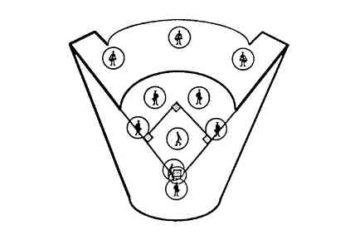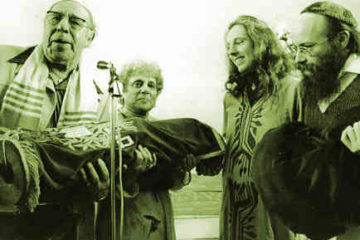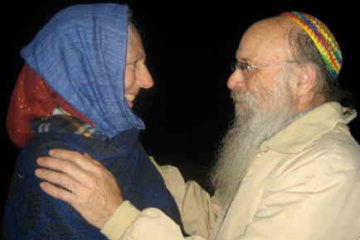The current protracted negotiations over Hebron have evoked for me memories of a sunnier, more hopeful time, when signs of peace flickered intermittently over the bleak landscape.
In the summer of 1979, Yehudit and I and Yeshayah, who was then just 13 months old, made our first trip to Israel as a family. We stopped for a day a so in Tel Aviv to visit relatives, then went up to Jerusalem and stayed with Jonathan Omer-Man. He lived in Abu Tor, a mixed Arab-Jewish neighborhood that straddled the Green Line and was part of no man’s land between 1948 and 1967. That very day, we touched the Kotel for the first time.
A highlight of our trip was the 10-day Festival of Peace, held at Moshav Me’ or Modi’im. The festival drew about 20 guests from around the world to a series of seminars led by Rabbi Shlomo Carlebach, Rabbi Zalman Schachter-Shalomi, Rabbi Meir Fund, Shaul Chill (a young Talmud scholar), and other teachers.
One day the group went on a field trip to Hebron, traveling by bus and taxi, to pray in the Ibrahim Mosque, which is built over the gravesites of Abraham and Sarah, Isaac and Rebecca, and Jacob and Leah at the Cave of Machpelah, and to visit an old blind sheik Reb Zalman had previously befriended.
At first, we were unable to gain access to the interior of the mosque, where the sepulchers are located, so we davened Minchah in the midday sun by the wall of the tomb. Afterward, we were shown around inside. Zalman evidently had a significant exchange with the keeper of the premises that enabled us to enjoy this courtesy.
A short distance from the Ibrahim Mosque was a deep cleft in the earth. Within an iron fence, a grass-covered slope led to a fissure at the bottom of some unused steps. A sign on the railing seemed to confirm that this was the original entrance to the Cave of Machpelah.
It was unclear whether one could enter this apparent opening or whether it was sealed further on, and I did not dare venture to find out. I wrote a kvitl (petition) on a sheet from my notebook and fantasized making a paper airplane out of it, then sailing it into that opening, but I held back. I could not be sure of my aim, and I didn’t want to shock local sensibilities and perhaps cause an international incident. I left the kvitl at the tomb of Rachel in Bethlehem, instead.
We had arrived during Ramadan, and the streets were nearly deserted due to the fast and the siesta time. The only places open for business were in the market of the Casbah, the Old City, where staples and delicacies – I especially remember the white goat cheese that we thought might be tofu – were on sale in anticipation of the evening feast.
The next stop on our pilgrimage was the small house of worship where the Sufi sheik we came to see – reputedly 130 years old! – held services. As we walked through the narrow, cobbled streets, Arab children ran alongside us, grinning and chanting, “Shalom! Shalom! Shalom! Shalom!” Reb Zalman carried Yeshayah on his shoulders until we reached what we took to be a small mosque, a thick-walled stone house, plastered and whitewashed inside. We took off our footwear at the entrance and walked in.
An atmosphere of quiet contemplation enfolded us. We stood awkwardly, tourists and seekers, waiting for orientation. Chaim Cohen, one of the members of our group from Modi’im (known as “Gingy” because of his red hair), knew some Arabic and translated the greetings and explanations of the Muslim cleric in charge.
Zalman made formal greetings in exchange, and we sat and awaited the arrival of the sheik. Some 10 or 15 minutes later, there was a stir at the door. Three or four young men appeared, escorting a frail, stooped, nearly blind but still vigorous old man clothed in a white gown, who entered the doorway, stumbling over our shoes. We were embarrassed; we hadn’t realized our footgear would block the entrance. Fortunately, he did not fall. We all stood in awe and respect while Zalman embraced him, held his hands and joyfully greeted him with words of blessing and thanks.
There followed some hospitable offerings of liquid refreshment, and the main event commenced. Men and women grouped themselves separately, according to the custom of the place, and the old sheik led us in zikr, the rhythmic chanting of the names of God and phrases from the Koran in Arabic, accompanied by drum and tambourine.
When it was time to go, we bowed our way out, with many thanks, and walked on air down the streets of the Casbah. Yeshayah rode on Claim’s shoulders while the red-haired translator earnestly discussed theological issues with our Muslim escort.
While waiting for transportation, we convened in small groups. The one Israeli member of our party confided that after our arrival at the little mosque, while preliminary introductions were being made, he had heard the name of one of our hosts and realized that it was the same family name as many of those who had attacked the Jewish quarter of Hebron in 1929. That riot led to the slaughter of 67 residents and the confiscation of their properly.
Simultaneously, our companion related, he had noticed a large stain on the rug. He had been unable to take his eyes off it and had morbidly wondered whether it was from the blood of the slain. He was still upset as he described this experience.
At Zalman’s suggestion, we formed a large prayer circle in an open space and even drew into it two of the three Israeli soldiers on guard duty there. We chanted and sang and then walked in a loose procession up the hill on the edge of town to a bus depot as night was falling. Soldiers in jeeps drove alongside of us, concerned for our safety. Although we sensed no danger, they escorted us the rest of the way, and two or three of our company rode in and on their vehicles. Later that evening, we made it safely back to the moshav.
Whenever I hear about troubles in Hebron, I think about that charmed visit – during a hopeful time in Palestinian-Israeli relations, a year after Anwar Sadat’s visit to Jerusalem and a couple of years before the war in Lebanon – when we made a pilgrimage to Machpelah.
Will there ever again be a time when Jews and Muslims can walk unafraid to the resting place of their common ancestor? Will the streets of Hebron ever offer sanctuary to all the children of Abraham?
Published in The Northern California Jewish Bulletin
For another version see: Reb Zalman Among the Sufis


